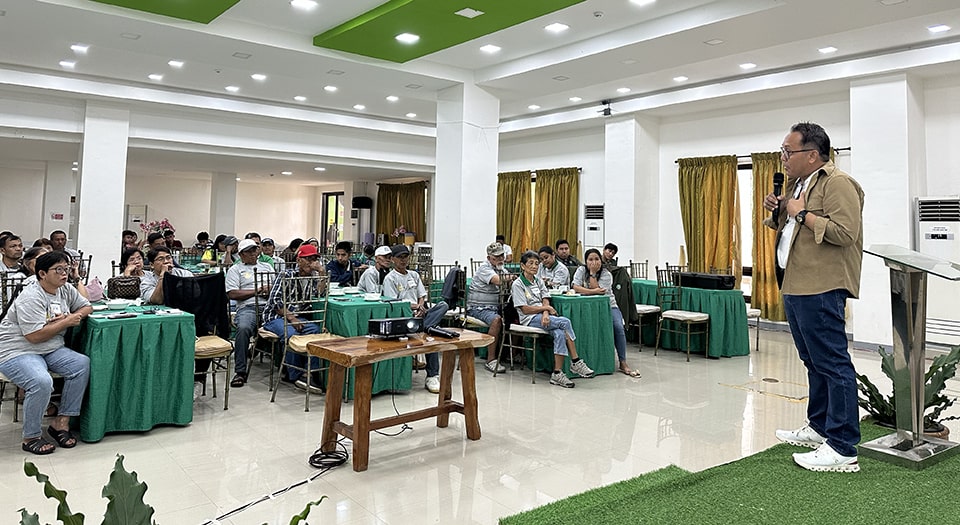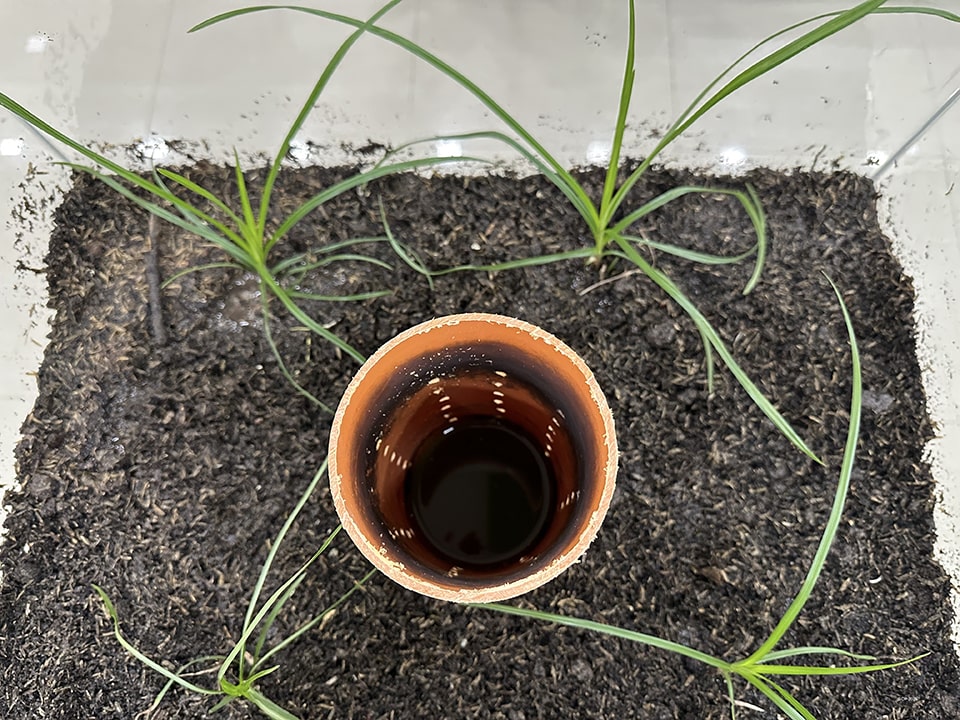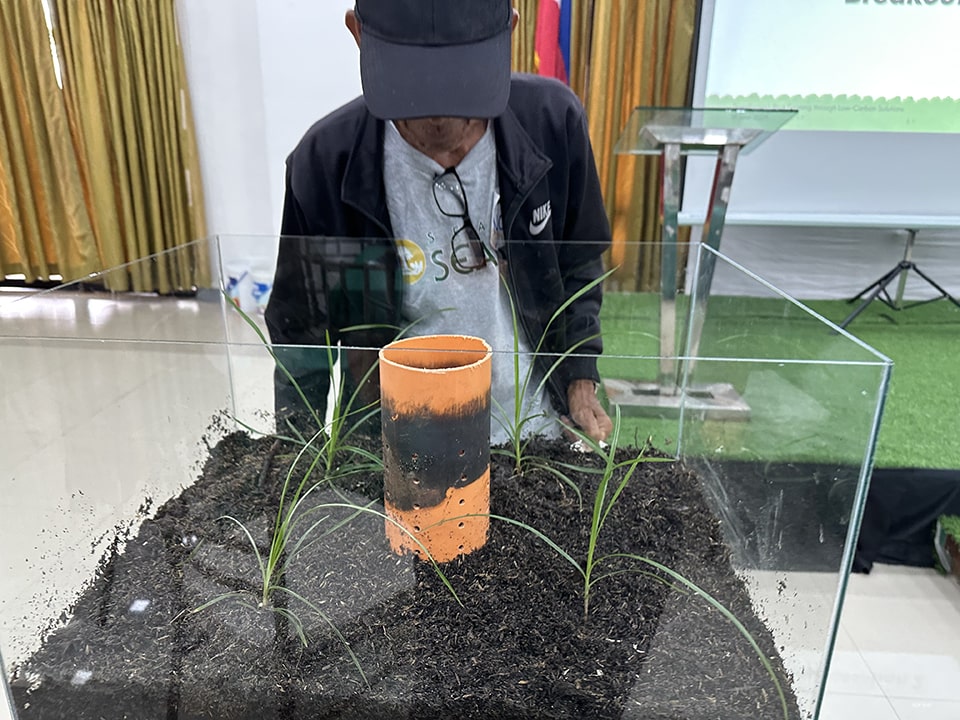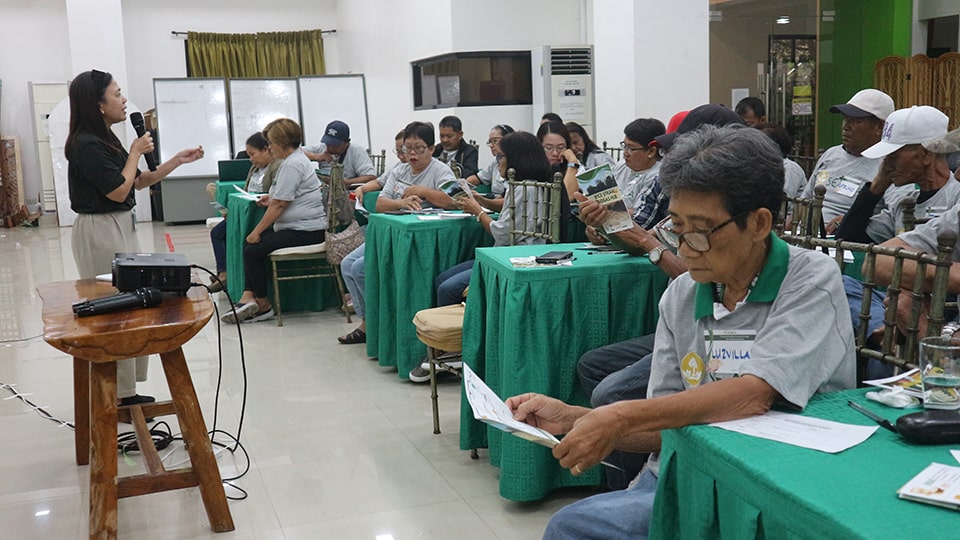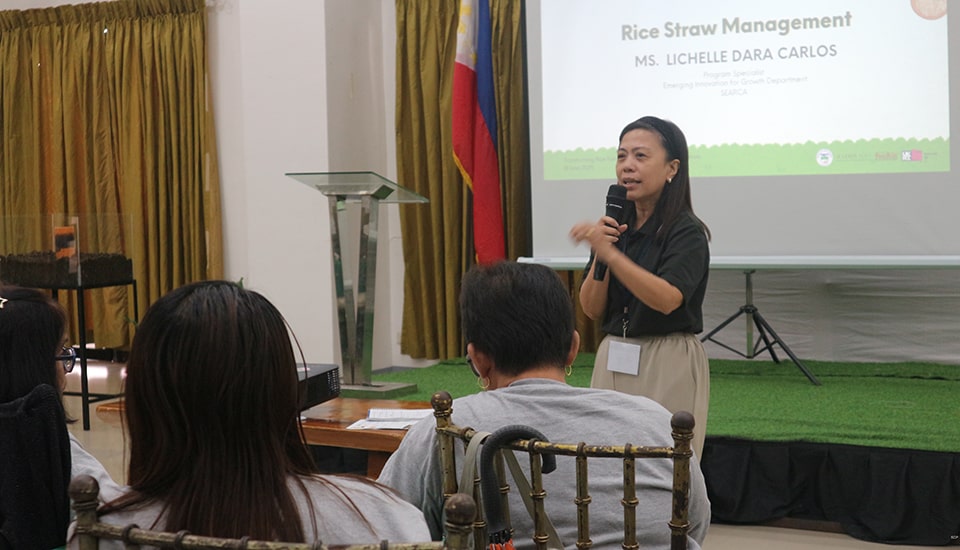LAGUNA, Philippines—Over 40 rice farmers and representatives from irrigators' associations and the local government of Santa Maria, Laguna gathered on 18 June 2025 for a workshop and consultation session that aimed to promote climate-resilient and sustainable practices in rice production.
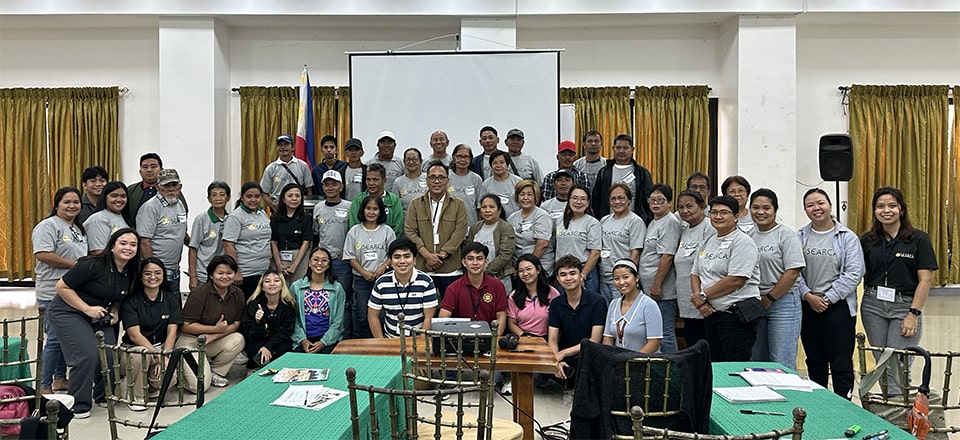 Santa Maria rice production stakeholders who participated in the event
Santa Maria rice production stakeholders who participated in the event
The event marked the third cycle of SEARCA's "Transforming Rice Farming through Low Carbon Solutions" initiative. Led by SEARCA's Emerging Innovation for Growth Department (EIGD), in partnership with Leads Agricultural Products Corporation (LEADS Agri) and Innovate UK through the Rice Straw Biogas Hub (RSBH) project, the initiative continues to strengthen the engagement of diverse actors across the rice value chain in advancing sustainable and climate-friendly farming solutions.
Ms. Blyndel Joy Casal, Santa Maria's Agricultural Technician, welcomed the participants and highlighted the importance of the activity in capacitating farmers how to properly integrate sustainable practices such as alternate wetting and drying (AWD) in their farm operations.
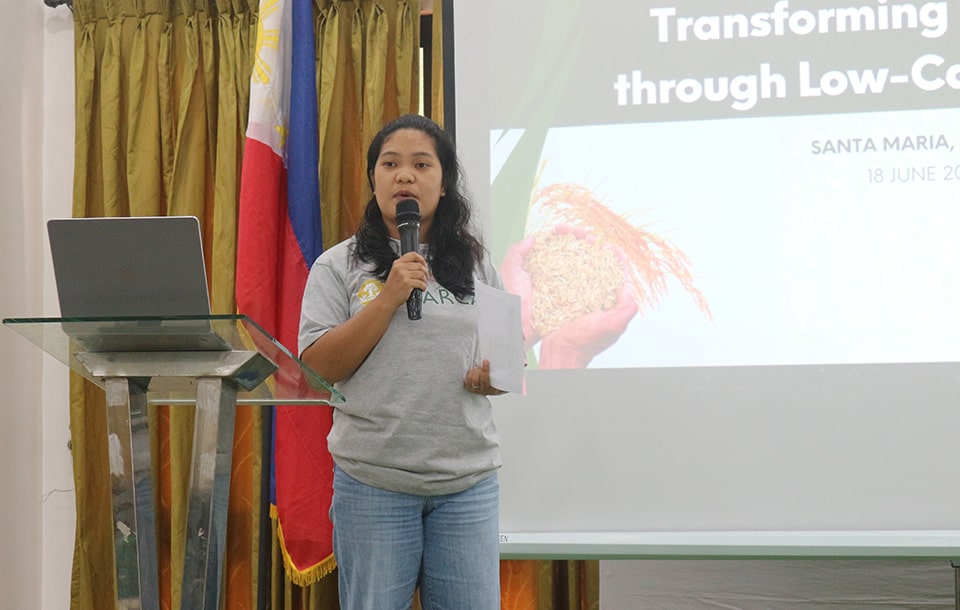 Ms. Casal welcomes the participants on behalf of the municipal mayor.
Ms. Casal welcomes the participants on behalf of the municipal mayor.
Engr. Jeremiah Calabia, LEADS Agri Junior Agricultural and Biosystems Engineer, discussed the escalating effects of climate change on farm production. He highlighted how extreme weather events, from complete submergence to severe flooding and drought, pose significant threats to agricultural yields.
Dr. Rubenito Lampayan, University of the Philippines Los Baños - College of Engineering and Agricultural Technology professor and alternate wetting and drying (AWD) expert, discussed the AWD techniques. Dr. Lampayan debunked common misconceptions regarding AWD application, particularly about the tube's water depth and the methods for determining when to irrigate the crops. He noted that studies show that AWD can save up to 40% of irrigation water and significantly lower methane emissions and global warming potential (GWP). While other Asian nations using AWD reported higher yields, Dr. Lampayan emphasized the need for further research as no significant disparity in yield has been observed in the Philippines.
A diorama was also exhibited to provide farmers with a visual aid to better understand the implementation and impact of an AWD configuration in their fields.
Meanwhile, Ms. Lichelle Dara Carlos, SEARCA Program Specialist, surveyed the Sta. Maria farmers on their common rice straw management practices. She also discussed rice straw burning and decomposition in flooded fields as sources of emissions.
Initial survey results revealed that most farmers incorporate rice straw into their fields as they view it as an additional fertilizer. Despite being prohibited, a few instances of burning were reported with farmers citing its effectiveness in eradicating mosquitoes and other insects. One farmer explained that burning rice straw is the easiest disposal method before the next planting season, saying "naghahabol kasi kami ng oras" (we're rushing against time).
Dr. Arnan Araza, LEADS Agri lead for digital agriculture innovation, tackled the concept of carbon market and how farmers can engage and benefit from it. Dr. Arnan emphasized the potential for income generation through climate-mitigating farming practices, such as AWD, by reducing greenhouse gas (GHG) emissions.
In the afternoon, a breakout session was conducted to assess current rice cultivation practices, irrigation systems in the area, and the AWD adoption rate.
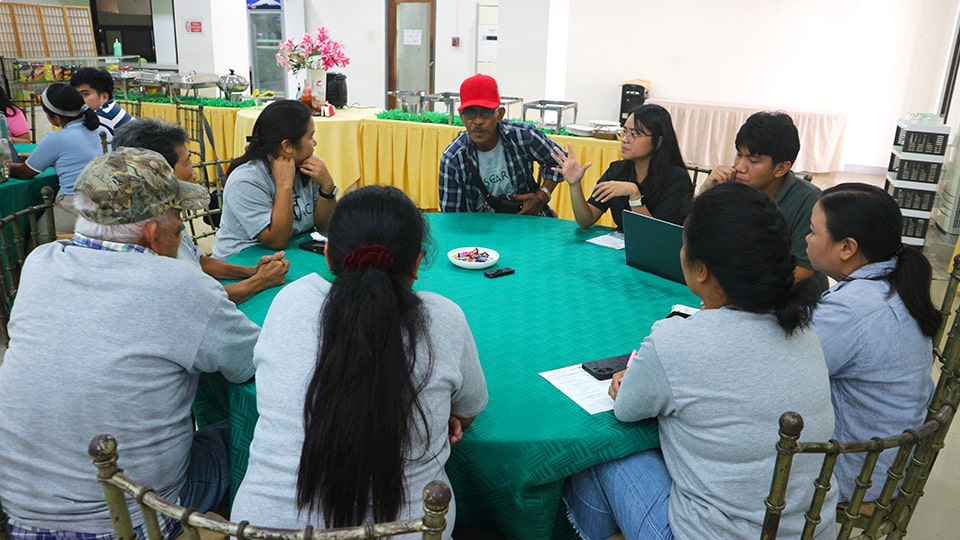 Ms. Corales getting the insights of the irrigators and MAO representatives on AWD.
Ms. Corales getting the insights of the irrigators and MAO representatives on AWD.
Before a drone flight demonstration, Mr. Jonathan Montecillo, LEADS Agri Product Development Supervisor, talked about the key features and benefits of Digisaka, an Android-based GIS application designed to help farmers efficiently monitor their farm plots from their homes.
The program concluded with a recorded message from Atty. Eric Reynoso, SEARCA EIGD Program Head, who emphasized the importance of integrating innovative farming practices and technologies into climate-smart agriculture.
To cap the day's activities, Mr. Montecillo and Engr. Calabia guided participating farmers through a live demonstration on drone-assisted farm mapping. The team successfully mapped a one-hectare paddy field, showcasing the potential of drone technology in precision farming.
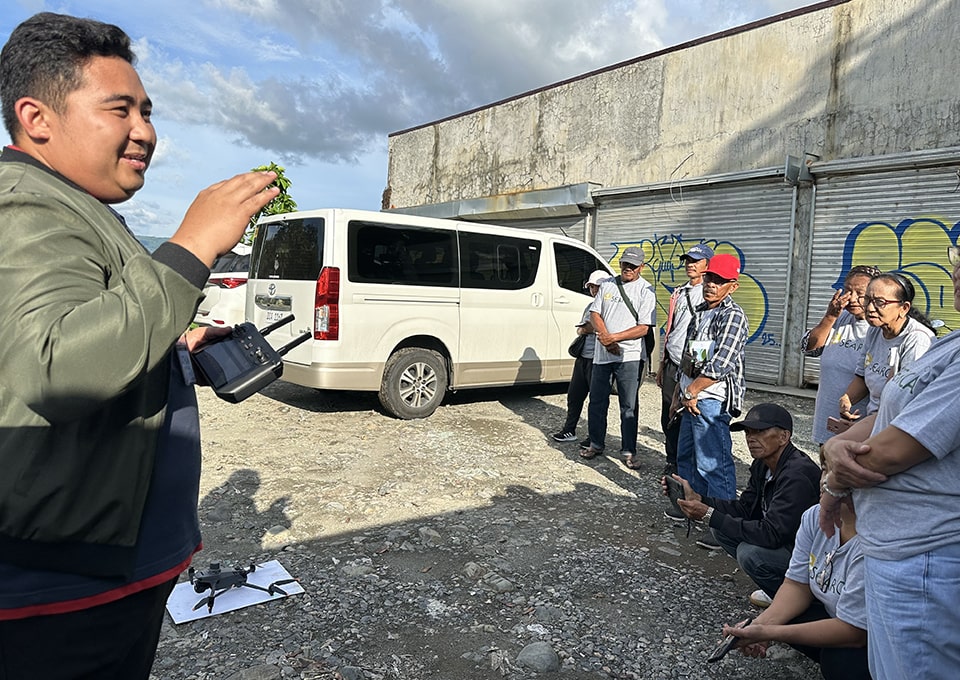 Mr. Montecillo demonstrates how to map a paddy field using a drone.
Mr. Montecillo demonstrates how to map a paddy field using a drone.
This low-carbon rice farming effort is consistent with SEARCA's commitment to promoting sustainable agriculture methods. It emphasizes the importance of collaborative efforts and knowledge sharing among key stakeholders to mitigate the adverse effects of climate change on the agricultural sector.

